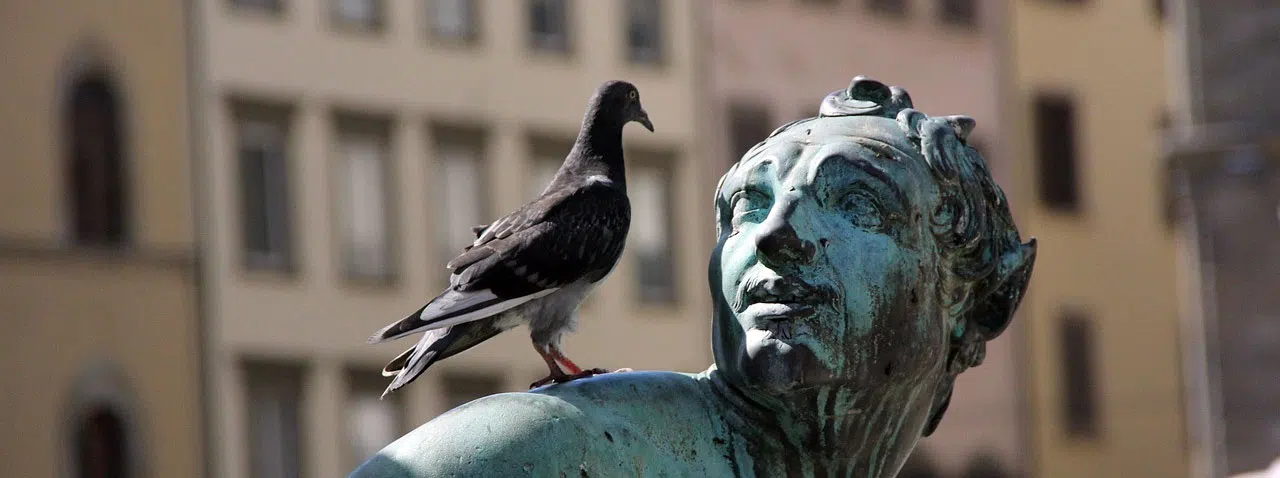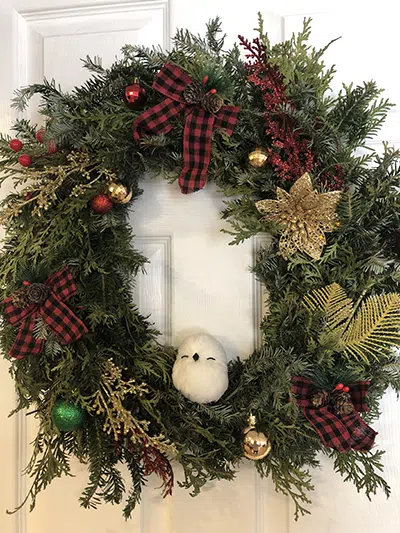- Yes, bird droppings, poop, or guano, can pose a serious health risk to humans.
- Bird droppings are quite acidic and can cause structural damage to buildings and bridges.
- Bird droppings can cause paint damage on cars and eat away at statues and monuments.
- Personal protective equipment must be worn to clean up bird droppings.
- Educating the public about potential health risks is very important.

Bird droppings, commonly referred to as guano, are a mixture of urine and feces. Birds excrete their waste through a single opening called the cloaca producing a combined waste product. This waste product, especially when it accumulates in large quantities, can pose a significant health hazard. Bird guano is rich is nitrates and ammonium, particularly uric acid. Also present are phosphorus, calcium, magnesium, and potassium. Birds can carry almost 60 different disease causing organisms and pathogens, including Histoplasmosis, Cryptococcosis, Psittacosis, Candidiasis, Salmonella, and E coli.
The Dangers of Bird Droppings
The primary mode of transmission for these and other infections is inhalation of the dried bird droppings. Birds will often roost on windowsills, rooftops, in signs over the door of a business, and their dropping will be underneath them, often where people are. People walk through it getting it on their shoes, as it dries they may carry it on their clothing. Disturbing the dust with the bird droppings can cause it to rise to be easily inhaled. At higher risk of contracting diseases from bird droppings are those who are in contact with the birds more often, ie: bird owners, poultry workers, construction workers, HVAC workers, or immunocompromised individuals. People with weakened immune systems are more susceptible to severe infection.
 Histoplasmosis
Histoplasmosis
Histoplasmosis is a respiratory disease caused by a fungus when the fungal sores are inhaled. When the guano dries, the spores can become airborne and are easily inhaled by people and other mammals. The symptoms of histoplasmosis can range from mild flu - like symptoms to severe respiratory issues, depending on the health of the individual and the amount of spores inhaled. In severe cases, especially in those with compromised immune systems, it can be life - threatening.
Cryptococcosis
Cryptococcosis is another fungal infection that can also be inhaled by people when the spores dry and easily become airborne. It primarily affects the lungs and nervous system. In healthy people the infection can be mild or even asymptomatic. You might feel a little tired. In people with compromised immune systems the infection can spread to the brain causing cryptococcal meningitis, which can be fatal if not quickly diagnosed and treated.
Psittacosis
Psittacosis, also known as parrot fever, is a bacterial infection caused by the bacteria Chlamydia psittaci. People can contract psittacosis by inhaling dust contaminated with the bacteria from the feathers or dried bird droppings.
The symptoms can include fever headache, chills, muscle aches, and a dry cough. Because it’s a bacterial infection it is easily treated with antibiotics, but early diagnosis is crucial to prevent complications.
Candidiasis
Candidiasis is a fungal infection, often spread by pigeons. The infection typically affects the skin, mouth, respiratory system, the intestines and the urogenital tract, especially the vagina. On the skin, it causes raised, red itchy patches, especially in the folds of your skin like the underarms or groin area. In the mouth you may have white patches on your tongue or the roof of your mouth, possibly on the back of your throat. Candidiasis is easily treated with anti fungal medications. Early treatment is essential as it can become systemic, especially in compromised individuals.
Salmonellosis
Salmonellosis often occurs as food poisoning and can be traced to pigeons, sparrows and starlings. The infection is bacteria that is found in bird droppings, dust from the dried droppings can be sucked into an air-conditioning unit or ventilations system, contaminating food and cooking surfaces in restaurants and food processing plants. As it is bacterial, it is easily treated with antibiotics.
Environmental Dangers
Bird droppings can also have a considerable environmental impact, beyond the direct health risks. Large accumulations of bird droppings can damage buildings and cause a roof to leak and eventually rot through. The droppings can cause paint damage on cars and damage to monuments and statues due to the corosive nature of the droppings.
Protecting Yourself from the Dangers of Bird Droppings
Contact a Bird Control Professional
The best way to mitigate the risks of exposure to these diseases from birds is to implement bird control measures. The first and most successful is the use of falconry for bird control. Having a trained raptor in the area scares the pest birds away. Bird spikes, electrical shock track, netting and other measures can reduce the number of birds in the area.
Cleaning and Maintenance
Regular maintenance and cleaning of these areas can further reduce the risks. To clean the bird droppings personal protective equipment is an absolute must. This includes masks, or respirators, gloves and protective clothing to minimize any direct contact with droppings or the dust of dried droppings. When cleaning it is essential to dampen the area first to stop the dust from becoming airborne. Also, using a disinfectant will kill the disease causing pathogens. The debris must be disposed of carefully and triple bagged for safety. Do not sweep or vacuum as this can release harmful spores into the air.
Exclusion
Once birds and excrement have been removed, it is wise to install one of many barriers (such as balcony netting) or ledge protection systems. This wil prevent further issues with nesting or rooting birds and the mess they leave behind.
Knowledge is Power
Educating the public about the potential hazards to health is important. Many people are unaware of the dangers involved and may not take precautions when coming into contact with bird droppings. Public education can raise awareness and encourage safe practices to reduce the risk associated with bird droppings.
By uUnderstanding the risks and dangers associated with bird droppings and implementing safe cleaning techniques with protective measures, the dangers can be successfully reduced to near zero. Being informed is a good first step to safeguarding your health and safety, whether you are an avid bird watcher, just taking a walk in the park or working in an environment with many birds around.
Hawkeye Bird & Animal Control to the Rescue
Hawkeye Bird and Animal control has your back. With over 30 years of experience and a wide range of bird control services and products, our experts help you mitigate your risks. We take care of your bird control problem and clean the droppings they leave so you don’t have to be exposed to health and safety risks yourself. Contact Hawkeye today to learn more about how to avoid the dangers of bird droppings.














